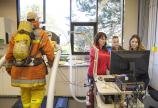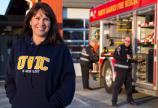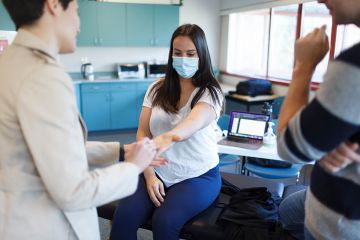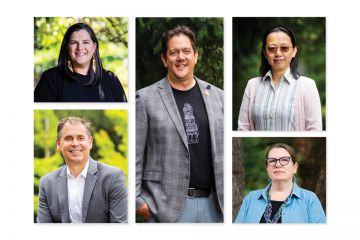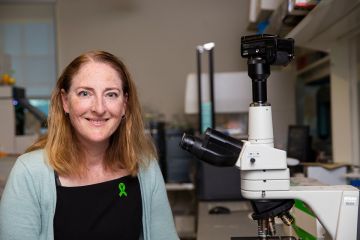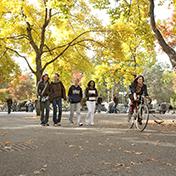Looking out for our heroes
- Kim Westad
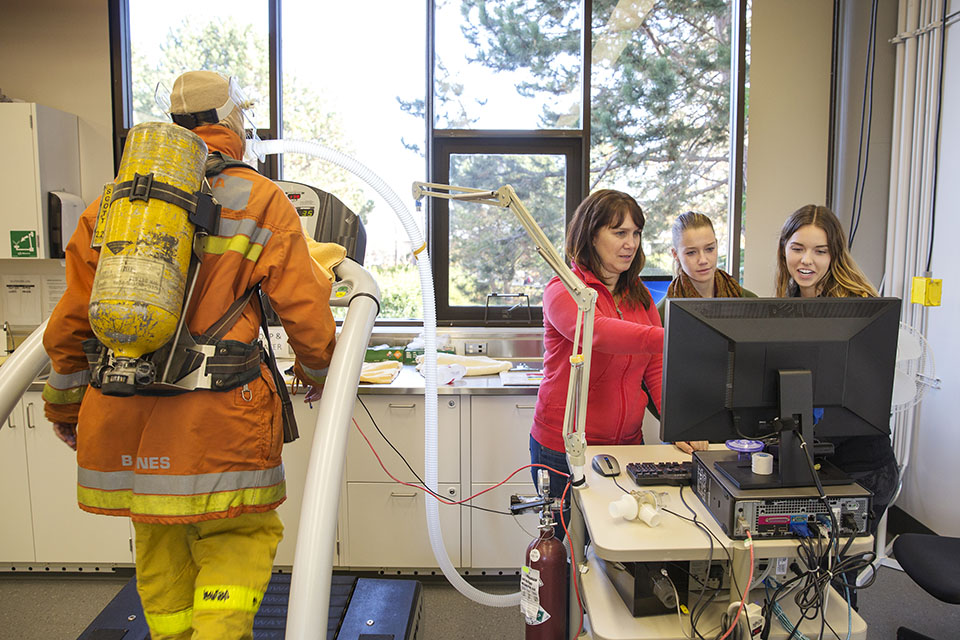
UVic research helps first responders cope with the unique physical demands of their jobs
Firefighters, search and rescue workers and paramedics put their lives on the line for our safety every day, yet we tend to take their health for granted.
These first responders do everything from rushing into burning buildings and extricating injured people from mangled vehicles, to spending the night on a turbulent ocean or plucking a lost kayaker from the waves.
“They’re so busy taking care of others, they sometimes don’t pay enough attention to taking care of themselves,” says Lynneth Stuart-Hill, an occupational physiologist in the University of Victoria’s School of Exercise Science, Physical and Health Education.
Stuart-Hill’s research looks for ways to improve working conditions for first responders, whom she calls “occupational athletes.”
She used to work with high-performance athletes who know when they’re competing, the time and duration of their match, the weather, the best time to sleep and the best nutrition for their sport. “They can prepare to have an optimal performance. First responder workers, whom we count on every day, can’t,” says Stuart-Hill.
First responders don’t know when they’re going to get called out to an emergency, have little information about what they’re doing until they’re on scene and have no idea how long they’ll be there. Some may be pulling survivors out of vehicles with the “jaws of life.” And others may be in a storm at sea, trying to remain standing on a pitching boat as they help an injured boater.
Add to this that many first responders are volunteers. They could be called in the middle of the night or at the end of a long day at their regular job. “When I looked at these workers and saw how they performed and functioned under such stress, I wanted to try and figure out strategies to help them remain safe.”
Research done by Stuart-Hill and her students has encompassed everything from the development of physical abilities assessments and fitness training manuals to specific findings—such as how caffeine consumption can raise core body temperatures and cause firefighters to use up more air from their tanks, and how firefighters are at a higher risk of heart disease.
The researchers honed in on the unique physical stressors of the job, such as the heavy gear firefighters wear to protect themselves. While it’s very effective at keeping the elements out, it’s equally effective at keeping in the heat generated by the firefighter’s body.
“When we exercise, we produce a lot of heat very quickly. If there’s no way to thermoregulate and get rid of that heat, it creates its own microclimate.”
The body doesn’t know how to deal with that and releases heat shock proteins into the blood, triggering the immune system and creating an inflammatory cascade. This can lead to arteriosclerosis and hardening of the arteries.
Stuart-Hill’s applied research is passed on to the firefighters and their national organizations who can put it to good use. For example, advanced clothing technology might be able to modify gear design to allow the heat to escape.
She and her students have been working with the North Saanich Volunteer Fire Department for about 12 years, providing tips that might seem small but have an impact. “Our goal is to help and support the community,” says Chief John Trelford, “and it’s the same for Lynneth and her students.”
—
EdgeWise
- The average age of a heart attack for a Canadian firefighter is about eight years younger than the average Canadian male. About 60 per cent of firefighter deaths are attributed to heart disease. Even when compared to other first responders who have shiftwork, the rate of firefighters with heart disease is high—two times the heart attack rate of police officers and four times that of paramedics.
- The Occupational Testing Centre—part of Stuart-Hill’s lab at UVic—does all pre-employment physical abilities tests for local fire departments. Senior students or post-graduates run the tests, which determine whether a person is fit for the job. More than 60 students have worked at the centre over the last eight years, providing them with valuable hands-on experience.
- Stuart-Hill’s students are helping Royal Canadian Marine Search and Rescue—a volunteer organization with 1,000 members throughout the province—put together a nutritional plan for rescuers who may be out at sea for hours. They’re also developing a training program for volunteers to help them physically prepare for rescues on the water.
- Stuart-Hill’s research also includes the development of pre-employment physical abilities tests and training manuals for occupations as diverse as the military, conservation officers, mill workers and loggers.
Photos
In this story
Keywords: health, research, firefighters, emergency
People: Lynneth Stuart-Hill

